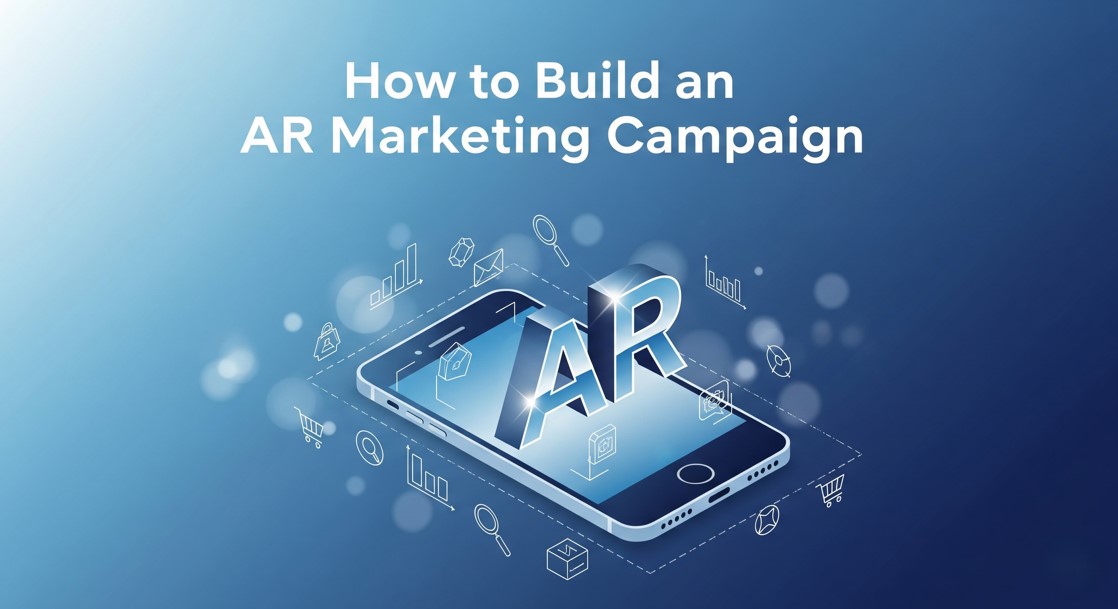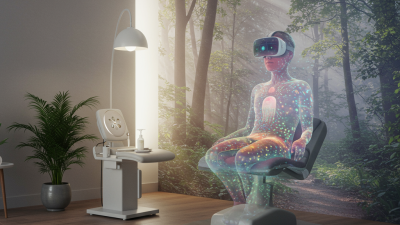Augmented reality marketing creates interactive experiences that boost engagement, reduce purchase hesitation, and drive conversions. Using AR formats like virtual try-ons, product visualization, and gamification, brands enhance user value, measure performance, optimize continuously, and integrate campaigns across channels.
Augmented reality marketing has evolved from a novelty into a powerful conversion tool that bridges the gap between digital experiences and real-world purchasing decisions. Brands using AR in their marketing campaigns report up to 94% higher conversion rates compared to traditional digital advertising, yet many marketers still view AR as too complex or expensive to implement effectively.
The reality is that AR marketing has become more accessible than ever, with platforms and tools that don’t require extensive technical expertise or massive budgets. What separates successful AR campaigns from gimmicky experiments is strategic planning that focuses on genuine user value rather than flashy effects.
This guide walks through the essential steps for creating AR marketing campaigns that not only capture attention but also drive meaningful business results. From initial concept development to performance optimization, you’ll learn how to leverage augmented reality technology to create memorable experiences that convert browsers into buyers.
Understanding Unique Value Proposition

Augmented reality marketing creates immersive experiences by overlaying digital content onto the real world through smartphones, tablets, or specialized devices. Unlike traditional advertising that asks consumers to imagine how products fit into their lives, AR lets them see and interact with products in their actual environment.
This “try before you buy” capability addresses one of the biggest barriers to online purchasing: uncertainty about how products will look, fit, or function in real-world settings. IKEA’s AR furniture placement tool, for example, helps customers visualize how a sofa will look in their living room, significantly reducing returns and increasing purchase confidence.
The psychological impact of AR experiences goes beyond practical benefits. When users actively participate in discovering and manipulating virtual objects, they develop stronger emotional connections to products compared to passive viewing of traditional advertisements.
Setting Clear Campaign Objectives
Successful augmented reality marketing campaigns start with specific, measurable goals that extend beyond generating buzz or social media shares. Different AR applications excel at different objectives, so clarity about your primary goal shapes every subsequent decision.
Brand awareness campaigns might focus on creating shareable AR experiences that encourage user-generated content. A cosmetics brand could develop AR filters that let users virtually try different makeup looks and share results on social platforms, amplifying reach through organic sharing.
Lead generation campaigns use AR as a data collection tool, requiring users to provide contact information to access premium AR experiences. Real estate companies often use AR to showcase property virtual tours, capturing qualified leads who demonstrate serious interest by engaging deeply with the experience.
Direct conversion campaigns integrate AR directly into the purchase funnel. Fashion retailers use virtual try-on features that let customers see how clothes fit and look, with seamless pathways to complete purchases without leaving the AR environment.
Choosing the Right AR Format for Your Audience

The success of your augmented reality marketing campaign depends heavily on selecting AR formats that align with your audience’s preferences and technical capabilities. Different demographic groups interact with AR technology in distinct ways, and platform choices significantly impact reach and engagement.
Web-based AR experiences run through mobile browsers without requiring app downloads, making them ideal for reaching broad audiences with minimal friction. These experiences work well for product visualisation, virtual try-ons, and interactive advertisements that users can access instantly through social media links or QR codes.
Mobile app-based AR offers more sophisticated features and better performance, but requires users to download dedicated applications. This format works best when AR is a core part of your product experience rather than a one-time marketing activation. Gaming companies and furniture retailers often choose this approach for ongoing user engagement.
Social media AR filters and lenses leverage existing platforms like Instagram, Snapchat, and Facebook, tapping into massive user bases and built-in sharing mechanisms. These experiences spread organically when users share their AR interactions, creating viral marketing opportunities with minimal paid promotion.
Creating Compelling AR Content That Drives Action
The most effective augmented reality marketing campaigns solve genuine user problems rather than simply showcasing cool technology. Users engage longer and convert more frequently when AR experiences provide practical value that enhances their decision-making process.
Product visualisation remains one of the most successful AR applications because it addresses the fundamental challenge of online shopping: understanding how products will look and function in real contexts. Home improvement retailers use AR to show how paint colors will look on actual walls, while automotive companies let users place virtual cars in their driveways to evaluate size and appearance.
Interactive storytelling through AR creates emotional connections that traditional advertising can’t match. Instead of telling customers about product benefits, AR experiences let users discover advantages through hands-on exploration. A skincare brand might create an AR experience that shows how different products address various skin concerns, with users exploring solutions relevant to their specific needs.
Gamification elements increase engagement time and create memorable experiences that users associate with your brand. Beauty brands often incorporate game-like elements into virtual makeup try-on experiences, rewarding users for trying different looks or sharing results with friends.
Technical Implementation and Platform Selection
Successful AR campaigns require careful platform selection based on your target audience’s device preferences and technical comfort levels. iOS users generally have access to more advanced AR features through ARKit, while Android’s ARCore provides broad compatibility across diverse device types.
WebAR platforms like 8th Wall or AR.js enable AR experiences that work across devices without app downloads, making them ideal for campaigns prioritising reach over advanced features. These solutions work well for product visualization, virtual try-ons, and interactive advertisements that users access through social media or website links.
Native app development provides the most sophisticated AR capabilities but requires significant development resources and user commitment to download dedicated applications. This approach makes sense when AR functionality is integral to your product experience rather than a standalone marketing campaign.
Performance optimization is crucial for AR success since poorly performing experiences frustrate users and increase abandonment rates. Test your AR experiences across different devices and network conditions to ensure smooth functionality for your target audience’s typical usage scenarios.
Measuring AR Campaign Performance
Traditional marketing metrics provide limited insight into AR campaign effectiveness because they don’t capture the unique engagement patterns of immersive experiences. Successful AR marketers track metrics that reflect user interaction depth and quality rather than just surface-level engagement.
Session duration and interaction depth reveal how compelling users find your AR experience. Users who spend significant time manipulating virtual objects or exploring different options demonstrate higher purchase intent than those who quickly exit the experience.
Conversion tracking requires specific setup to measure how AR interactions influence purchasing decisions. Implement tracking that connects AR engagement to downstream actions like product page visits, cart additions, and completed purchases. This data reveals which AR features most effectively drive business results.
User-generated content metrics show how well your AR experience encourages organic sharing. Track social media mentions, hashtag usage, and shared AR results to measure viral amplification effects. High-quality UGC often indicates that users find genuine value in your AR experience.
Integration with Broader Marketing Strategies
Augmented reality marketing works best when integrated seamlessly with your overall marketing ecosystem rather than operating as an isolated campaign. Cross-channel integration amplifies AR impact while providing multiple touchpoints to guide users through the purchase funnel.
Email marketing can drive AR engagement by featuring exclusive AR experiences for subscribers or highlighting user-generated content from AR interactions. Include clear calls-to-action that direct email recipients to AR experiences, and follow up with personalized product recommendations based on AR engagement data.
Social media strategy should leverage AR’s natural shareability while providing value beyond viral moments. Create AR experiences that users want to share not just for entertainment but because they solve real problems or provide genuine utility.
Content marketing can educate audiences about AR capabilities while building anticipation for campaign launches. Blog posts, videos, and tutorials that explain how to use AR features reduce barriers to engagement and increase campaign participation rates.
Optimizing for Long-Term Success
Sustainable AR marketing success requires continuous optimization based on user feedback and performance data. The most successful brands treat AR campaigns as ongoing experiments rather than one-time activations, constantly refining experiences to improve user satisfaction and business results.
Regular user testing reveals friction points that might not appear in analytics data. Watch users interact with your AR experiences in real-time to identify moments of confusion or frustration that could be preventing conversions.
A/B testing different AR elements helps optimize for your specific audience preferences. Test variations in visual design, interaction methods, and call-to-action placement to identify combinations that drive the highest conversion rates.
Technology evolution means that AR capabilities constantly improve, creating opportunities to enhance existing campaigns with new features. Stay current with platform updates and emerging AR tools that could improve user experiences or reduce implementation complexity.
Building Your AR Marketing Foundation

Creating successful augmented reality marketing campaigns requires balancing technological possibilities with practical business objectives. The brands seeing the strongest ROI from AR investments focus on solving real user problems rather than pursuing impressive but irrelevant technical demonstrations.
Start with clear goals, choose AR formats that match your audience’s preferences, and create experiences that provide genuine value beyond novelty. Measure performance using metrics that reflect AR’s unique engagement patterns, and integrate AR seamlessly with your broader marketing strategy.
The future of marketing increasingly includes immersive experiences that blur the lines between digital and physical interactions. Brands that master AR marketing now will have significant advantages as these technologies become standard expectations rather than exciting innovations.
Frequently Asked Questions (FAQ) – Augmented Reality Marketing
1. What is augmented reality (AR) marketing?
AR marketing uses technology to overlay digital content onto the real world, creating interactive experiences that allow users to visualize, try, or engage with products in their actual environment. It transforms passive advertising into immersive, actionable experiences.
2. Why should brands use AR in marketing?
AR enhances user engagement, builds stronger emotional connections, reduces purchase hesitation by providing a “try before you buy” experience, increases social sharing, and can significantly boost conversion rates compared to traditional digital campaigns.
3. What types of AR experiences are used in marketing?
AR experiences include product visualization, virtual try-ons for fashion or cosmetics, interactive storytelling, gamified experiences, virtual tours, and social media AR filters or lenses that encourage sharing.
4. How do I choose the right AR format for my audience?
Consider your audience’s device preferences, technical comfort, and campaign goals. Web-based AR offers easy access, app-based AR provides advanced features, and social media AR leverages viral sharing opportunities. Matching format to audience behavior is key.
5. How do I create AR content that drives conversions?
Focus on solving real user problems, providing practical value, and enhancing decision-making. Interactive product visualization, gamification elements, and storytelling experiences increase engagement and help users make confident purchase decisions.
6. What platforms and tools can I use for AR marketing?
WebAR platforms like 8th Wall and AR.js allow browser-based experiences. App-based AR can leverage ARKit (iOS) and ARCore (Android) for native apps. Social media filters can be created via Instagram, Snapchat, or Facebook AR tools.
7. How do I measure the performance of AR campaigns?
Track metrics like session duration, interaction depth, conversion rates, cart additions, purchases, and user-generated content shares. Measure both engagement quality and downstream business impact to gauge campaign effectiveness.
8. How can AR be integrated with broader marketing strategies?
AR works best when combined with email campaigns, social media strategies, content marketing, and product promotions. Cross-channel integration amplifies reach, drives conversions, and reinforces brand messaging.
9. What are best practices for long-term AR marketing success?
Continuously optimize campaigns with user testing, A/B testing of AR elements, performance analysis, and adapting to evolving AR technology. Treat AR campaigns as ongoing initiatives rather than one-time experiments.
10. What challenges should I anticipate with AR marketing?
Challenges include high development costs for advanced AR, device compatibility, user adoption barriers, and performance issues. Address them through accessible AR formats, careful testing, clear calls-to-action, and seamless user experiences.





